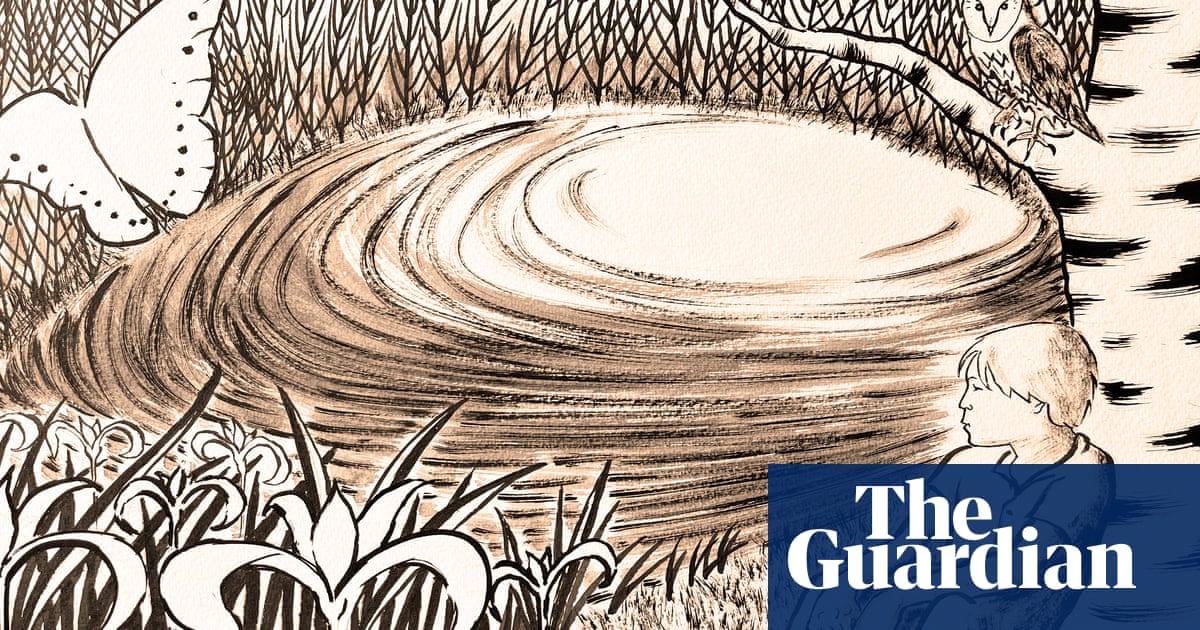The old pond full of flags and fenced aroundWith trees and bushes trailing to the groundThe water reeds are all around the brinkAnd one clear place where cattle go to drinkFrom year to year the schoolboy thither stealsAnd muddys round the place to catch the eelsThe cowboy often hiding from the fliesLies there and plaits the rushcap as he liesThe hissing owl sits moping all the dayAnd hears his song and never flies awayThe pinks nest hangs upon the branch so thinThe young ones caw and seem as tumbling inWhile round them thrums the purple dragon flyeAnd great white butter flye goes dancing bye
The early acclaim won by the so-called “peasant-poet”John Clare(1793-1864), declined during his middle years, and he was almost penniless by 1823. With the support of friends, he and his family were able to leave his home village Helpston for a larger cottage in Northborough, Cambridgeshire, and this is where he was living when he wrote this week’s poem.
Although the stay in Northborough was not a happy time for Clare, the poem teems with the vitality of early summer. Perhaps it’s a retrospective view, and the quietly mischievous schoolboy featured here and in other poems of the same period, is the young Clare. The style is impressionistic and yet the statements are strong with present-tense exactness and immediacy. Clare seems to grasp the whole scene in one moment of vision. It’s a scene of continuous movement.
The prepositions “around” and “round” give us some of that movement in the opening lines. Even if the phrase “fenced around” could briefly besuggestive of Enclosure, the fence itself is an easily penetrated, disordered, living entity of “trees and bushes trailing to the ground”. There are “flags” (wild irises) growing abundantly in the pond and “water reeds [… ] all around the brink.”
At the same time, the poem conveys a certain sense of orderliness, as if the pond’s various visitors had found their particular space and, at least for the present, were not obliged to fight for it. The cattle have reliable entry to “one clear place” where they can go to drink, and never mind if the schoolboy “muddys round the place” as he catches eels. Clarity and muddiness seem to co-exist in easy harmony. The pond remains a focal point for the poem, not always visible, but at the heart of the informal local ecosystem.
As well as enjoying the circular movement of “around”, Clare plays on the theme of flight. The action is small-scale and limited. It begins, in fact, with “flies” – the annoying insects which the cowboy (who herds the cattle) is hiding from. He’s at work, though perhaps lazily, making a cap or bonnet out of rushes. He’s also singing, it seems, and disturbing an owl. Clare’s “hissing owl” is no fantasy: barn-owls havea range of calls other than “hooting”.
This one has a nest to guard somewhere nearby, it seems, and so she “never flies away”, another brief vision of simultaneous constraint and freedom. But there’s further movement for the poet to observe: the “pinks nest”, which hangs precariously from a thin branch, and the young, newly flying birds which “caw and seem as tumbling in”. The “pinks” are probably chaffinches, and the “cawing” simply the sound of noisy young birds. The branch hangs near the surface of the water, and Clare may be superimposing his own sense of displacement and uncertainty on the fledglings and their nest.
Flight and freedom are restored by the presence of “the purple dragon flye” and “the great white butter flye” in the final couplet. A contrasted movement is captured in the verbs assigned to each, and, importantly, the sound of the dragonfly is audible through its “thrums”. It thrums round the birds, beautifully enhancing the circular movement evoked in the opening couplets. The butterfly is soundless, meanwhile, and, on an errand of its own unconnected with the pond, “goes dancing by”. This miniature celebration completes the poem, its 14 lines amounting not to a sonnet, I think, but an altogether more complex, balanced and naturalistic picture of the old pond.
